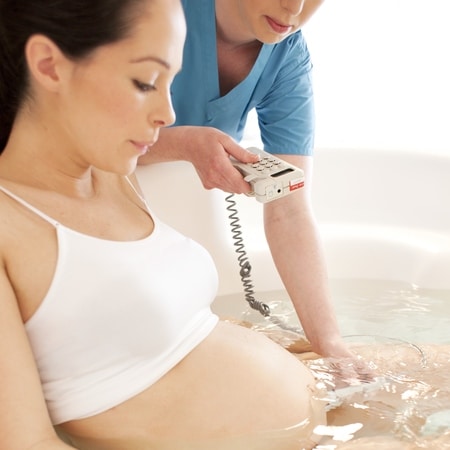You are now 6 months pregnant and knee deep in baby decisions. When surfing the net you come across alternative forms of birthing. There are more than one? Waterbirths are increasingly becoming popular due to the comfort factor for mom. They are also believed to be a gentler, slower introduction to life for the baby. I have seen the waterbirths done on T.V. but didn’t give it a second thought until I saw that only 10% of women who do a water birth need painkillers during labour. Could that be right?
Yup! Water is said to be a natural pain killer.
80% of women who have done a water birth say they would give birth that way again and rate their overall experience as positive. There were no differences in APGAR scores, NICU admissions, and neonatal infections when comparing water immersion births to regular deliveries.
Potential Advantages of Water Immersion
- The buoyancy of water enables a mother to move more easily;
- Blood pressure is lowered;
- Comfort & relaxation may be enhanced;
- Maternal sense of control may increase, which in turn enhances emotional well-being;
- Pain may be diminished;
- The need for pharmacological pain relief may be reduced;
- Length of labour may be reduced;
- Improved perineal stretching may reduce trauma;
- Operative births may be reduced.
Potential Disadvantages
- Decrease in uterine contraction strength and frequency, especially if used before active labour is established;
- Neonatal water aspiration; at least two cases have been recorded
- Maternal hyperthermia may contribute to fetal hypoxemia (water should be kept at 36-37.5 and monitored by a floating thermometer)
- Neonatal hypothermia is possible if water temperature is too cool;
- Cord immersion in warm water may delay vasoconstriction, increasing red cell transfusion to the newborn and promoting jaundice;
- Blood loss estimation and assessment is difficult in the water;
- Maternal and Neonatal infection may be increased; not supported by the evidence
- Theoretical risk of maternal water embolus;
- Risk of acquiring blood born infection or sustaining back injury for caregivers.
Rules:
- Fetal heat should be monitored by waterproof doppler.
- Shouldn’t enter tub until active labour has begun.
- Must drink lots of fluid and leave tub to urine.
- Alternative birth place must be set up outside the tub.
- Placenta must be delivered outside the tub.
- The baby should be born completely underwater with no air contact until the head is brought to the surface, as air and temperature change may stimulate breathing and lead to water aspiration.
- At birth the baby’s head must be brought to the surface immediately.
- Watch baby’s temperature carefully to prevent hypothermia.
Where is this done? While most hospitals have tub in some of the rooms for comfort the actual delivery is done outside the tub. Most are performed at home with midwives.







